Binance's weekly trading volume reached $24 billion in January this year, accounting for 49% of the global USDC total trading volume.
Author: The Kaiko Research Team
Translation: Deep Tide TechFlow
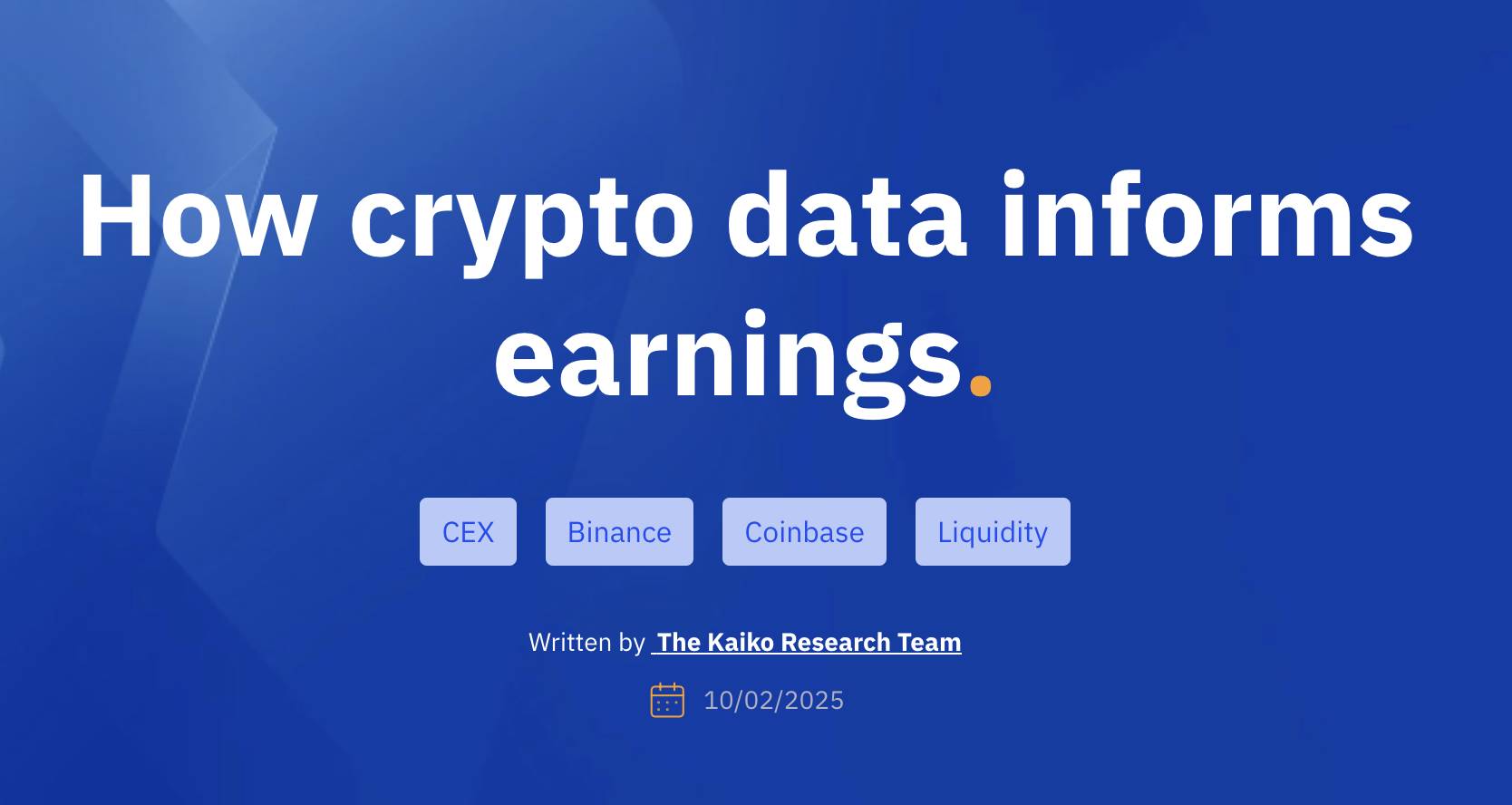
As North America rapidly resolves tariff disputes, global markets are gradually stabilizing. Meanwhile, the United States is actively exploring the establishment of its own sovereign wealth fund, while cryptocurrency regulator David Sacks optimistically predicts that digital assets are about to enter a "golden age."
This week, we will delve into the following aspects:
Coinbase's market performance ahead of its earnings report
Significant growth in USDC trading volume on the Binance platform
Trends in altcoin market liquidity
How crypto data becomes a key tool for predicting earnings performance
Coinbase Earnings Preview: Market Data Provides Early Insights
Coinbase will release its Q4 2024 earnings report this Thursday (February 13). Prior to this, by analyzing market data, we can gain preliminary clues about its performance. Although analysts' earnings expectations and outlooks directly impact stock prices, crypto market data often serves as an important leading indicator of exchange health.
Data shows that Coinbase's weekly trading volume in Q4 reached its highest level in two years. This trend indicates that the platform has benefited significantly from the market rebound following the U.S. elections.
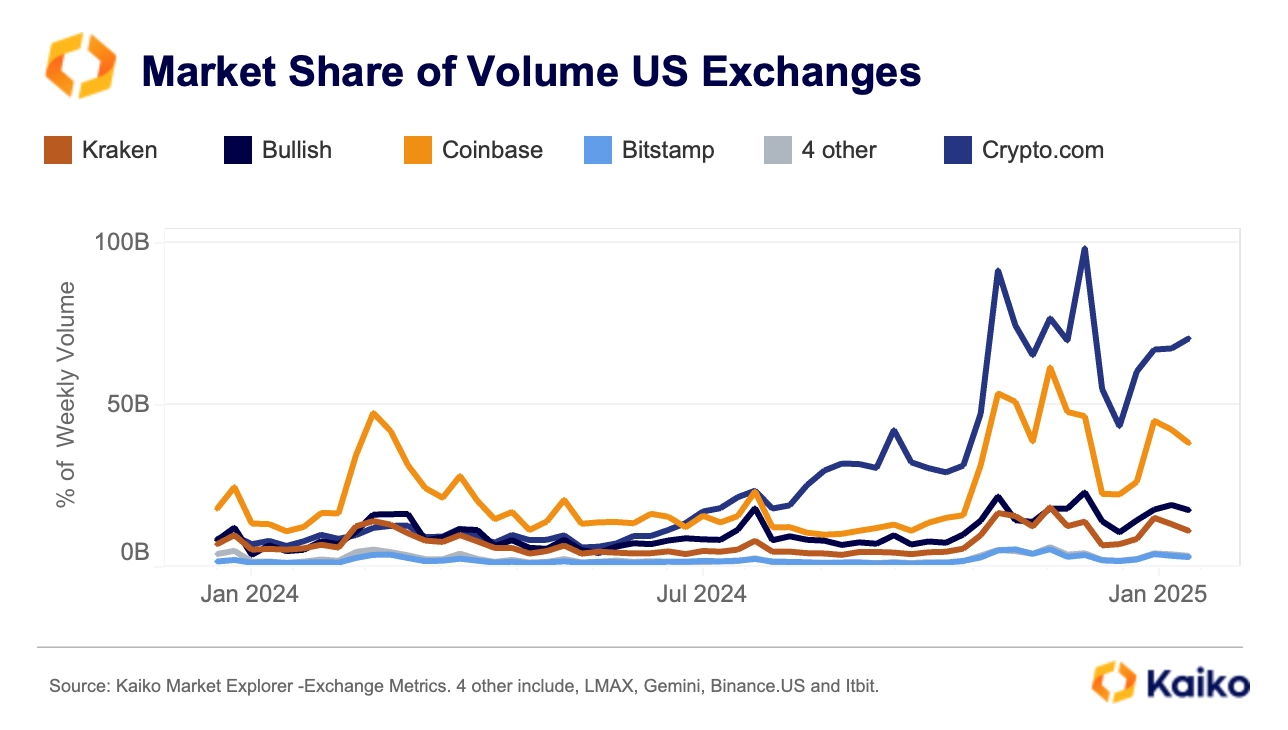
In recent years, Coinbase's revenue sources have diversified, with its "subscription and services" business (including staking rewards, custody fees, and USDC interest) significantly increasing its share of total revenue.
However, trading revenue remains Coinbase's core business. Except for one quarter in 2023, trading revenue has consistently accounted for over 50% of total revenue.
It is important to note that subscription and service revenue is closely related to the overall activity level of the crypto market and does not serve to diversify risk. Therefore, in cases of low trading activity or market price declines, subscription and service revenue can also be significantly affected.
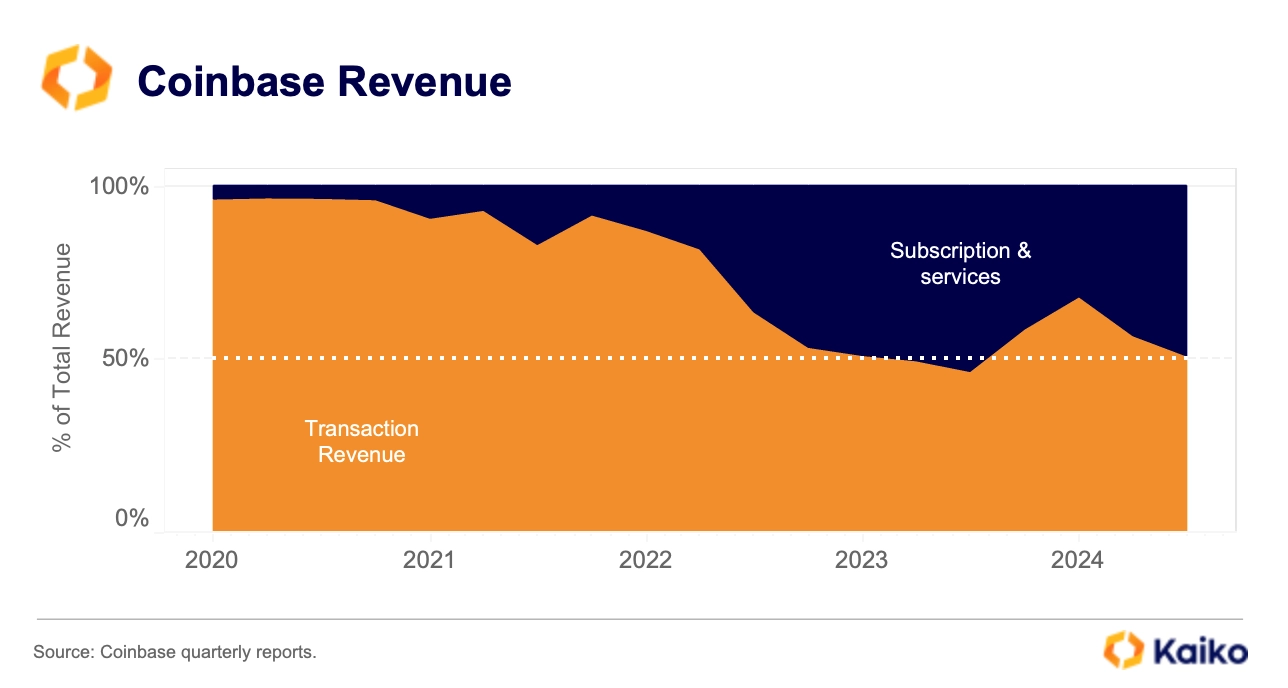
For example, in Q3 2024, due to the decline in ETH and SOL prices, Coinbase's blockchain rewards revenue decreased by 16%.
Using Kaiko's blockchain monitoring tools, it can be observed that net inflows on the Ethereum Beacon Chain decreased in Q4 2024. As the second-largest ETH staking entity after Lido, Coinbase is one of the main contributors to this downward trend. Data shows that Coinbase's market share in the staking market has declined by 3.8% over the past six months, with a net outflow of 1.29 million ETH during the same period.
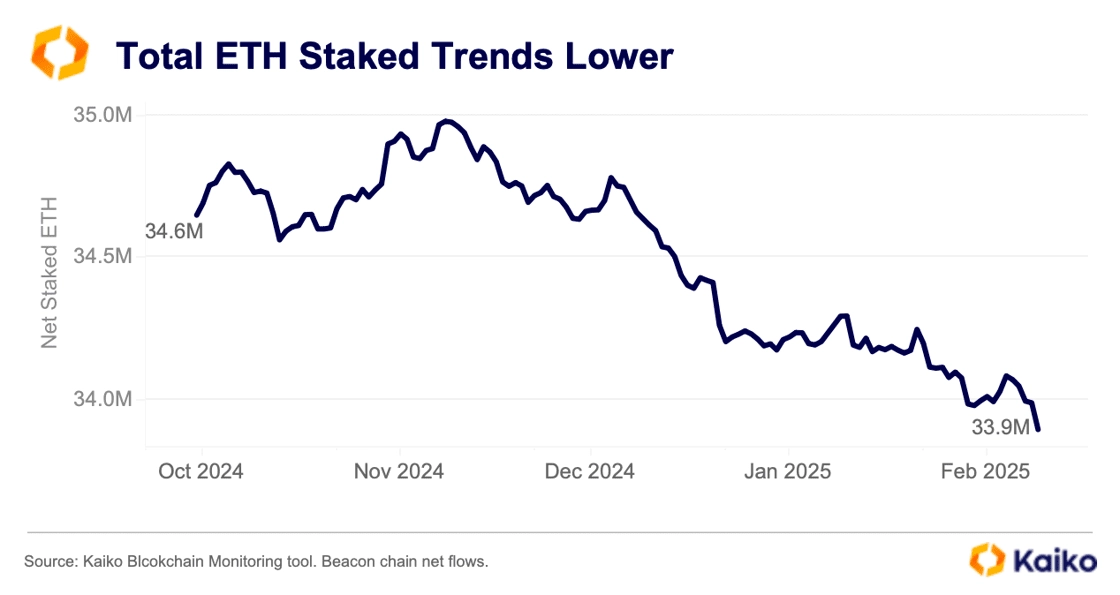
This trend indicates that while Coinbase still holds a significant position in the staking space, its market share is gradually being eroded by competitors. This could adversely affect its long-term revenue growth and competitiveness.
Although the price increases of ETH and SOL during the quarter somewhat mitigated the impact of reduced staking, overall data still suggests that Coinbase's blockchain rewards revenue may decline in Q4. Particularly in the ETH staking market, Coinbase's market share has decreased by 3.8%, which directly impacts its staking-related revenue.
Coinbase's commercial agreement with Circle allows it to obtain a stable source of revenue from USDC-related income. Notably, Circle's new partnership with Binance and record USDC trading volumes may somewhat offset the decline in staking revenue. This provides Coinbase with an additional revenue buffer, especially when staking and trading revenues are under pressure.
Retail traders, who pay the highest trading fees, have seen their trading volume share drop significantly from 40% in 2021 to the current 18%. Although Coinbase's subscription business (such as blockchain rewards and custody services) has grown, the loss of retail traders continues to exert significant pressure on its trading revenue.
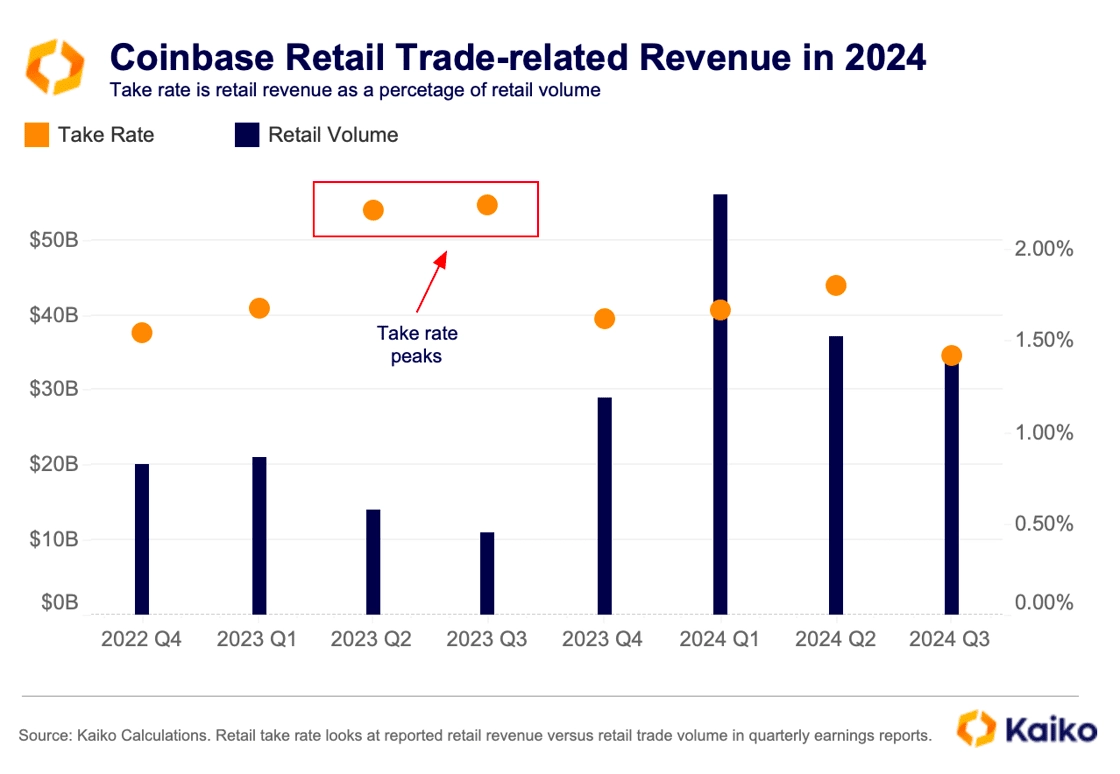
Since peaking in mid-2023, Coinbase's "extraction rate" (the proportion of revenue obtained from retail traders) has fallen to its lowest level since the Terra Luna collapse in the first half of 2022.
The decline in revenue coincides with intensified competition in the U.S. market, as some platforms have significantly reduced trading fees to attract users, further increasing pressure on platforms like Coinbase.
Although Coinbase remains one of the most liquid exchanges in the U.S., its fee structure (more favorable to market makers rather than takers) is relatively stable, but the reduction in retail traders undoubtedly exacerbates the pressure on this revenue source.
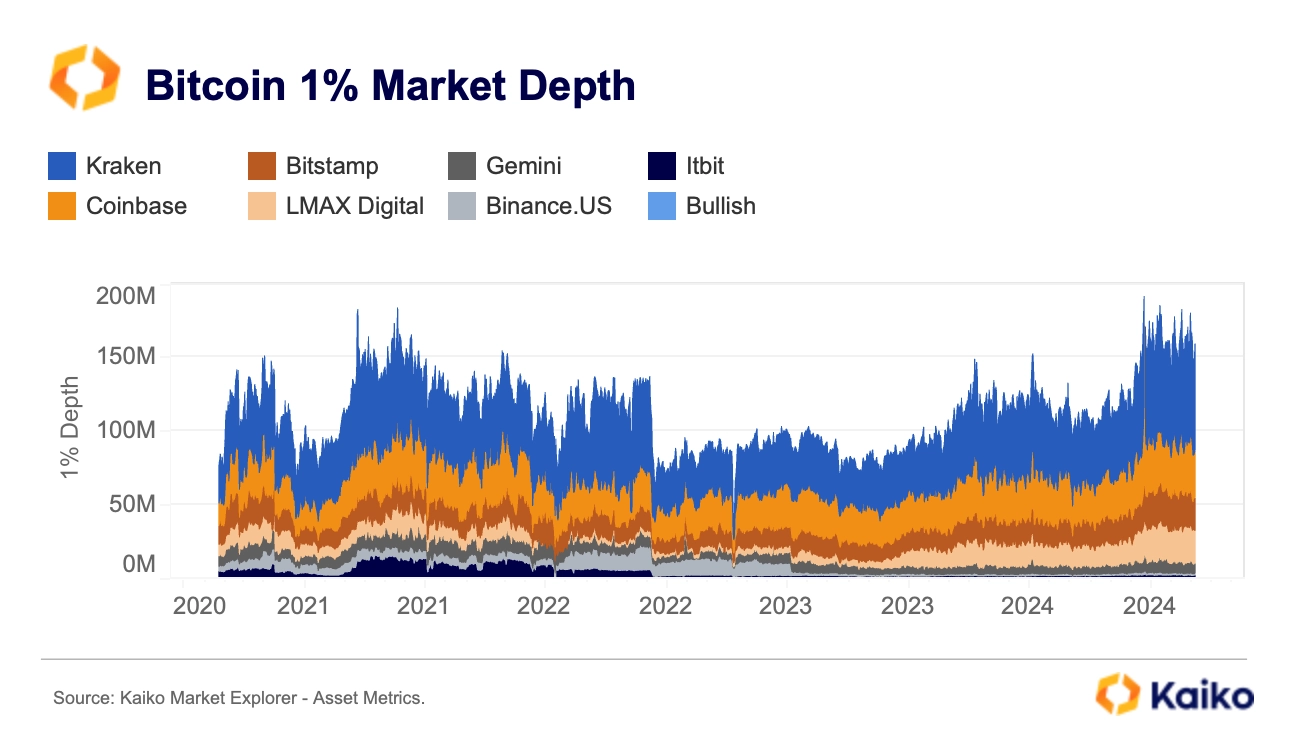
Additionally, despite Coinbase's ongoing efforts to diversify its product offerings and gain more benefits from cross-product synergies, the strict regulatory environment in the U.S. has significantly slowed its new asset listing activities.
The chart below shows that since the SEC filed lawsuits against Binance.US and Coinbase in June 2023, the number of active trading pairs on both platforms has significantly decreased. However, if the regulatory environment improves in the future, Coinbase may accelerate its listing pace again, which could enhance its appeal to retail traders.
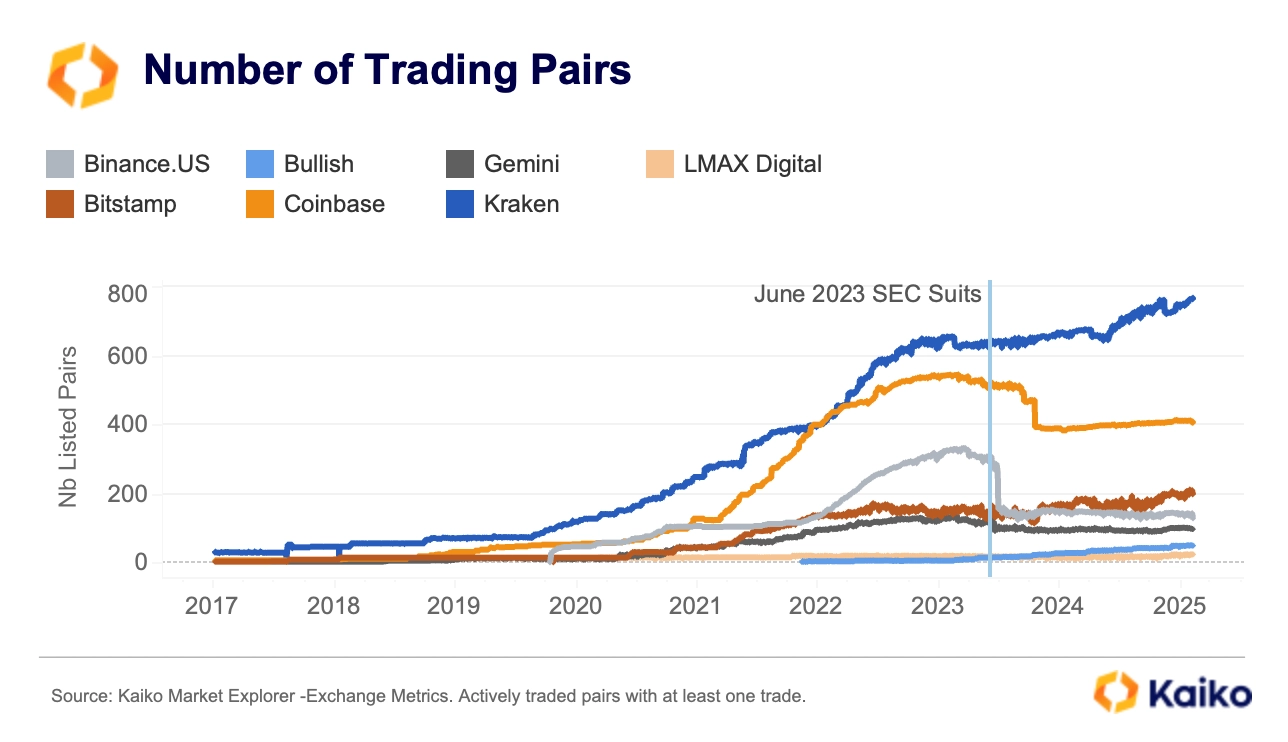
Data Points
USDC Trading Volume Hits Record High: Binance's Dominance
Binance has now become the largest USDC trading market globally, with a weekly trading volume of $24 billion in January 2025, accounting for 49% of the global USDC total trading volume. This is the highest market share since September 2022. This significant growth is attributed to the strategic partnership Binance established with Circle at the end of 2024, aimed at promoting the broader adoption of USDC.
In contrast, Bybit's market share has significantly declined from 38% in October 2023 to the current 8%.
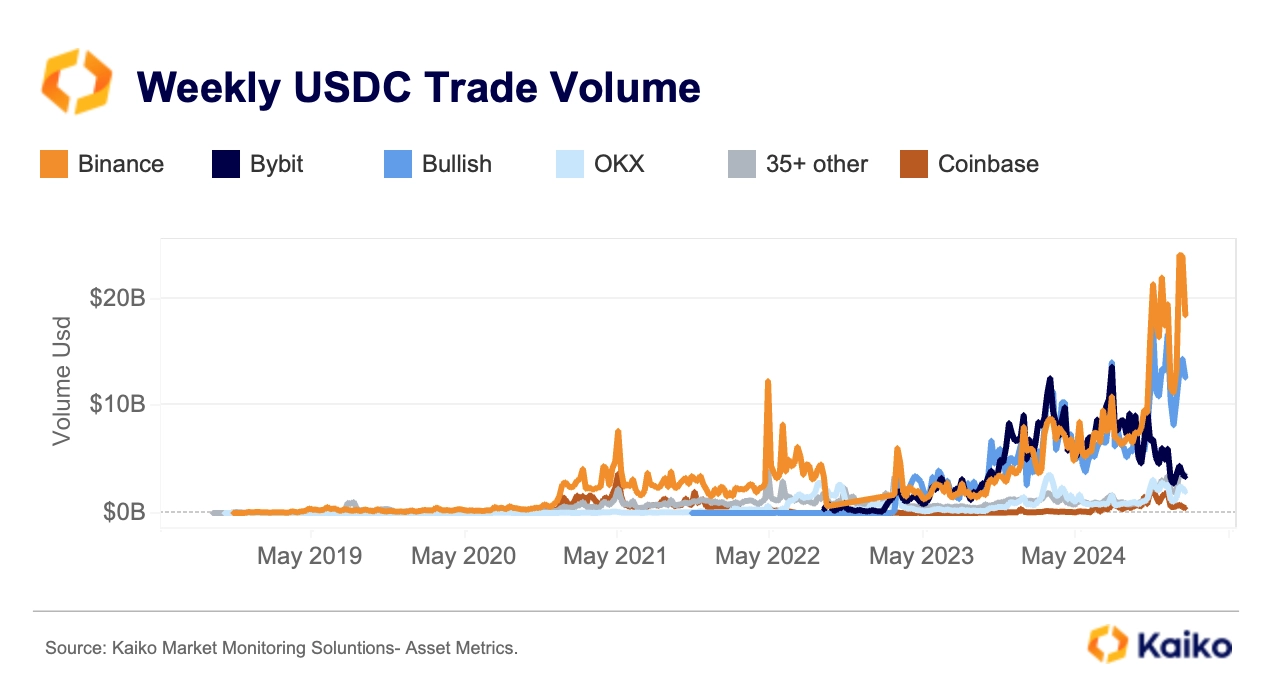
Meanwhile, the Bullish platform has rapidly emerged as one of Binance's main competitors, capturing a 32% market share.
This shift in market dynamics is also reflected in the intensified competition among stablecoins. Data shows that the proportion of newly listed USDT trading pairs has dropped from 77% in 2023 to below 63% in 2024, and so far in 2025, this proportion has further decreased to 50%.
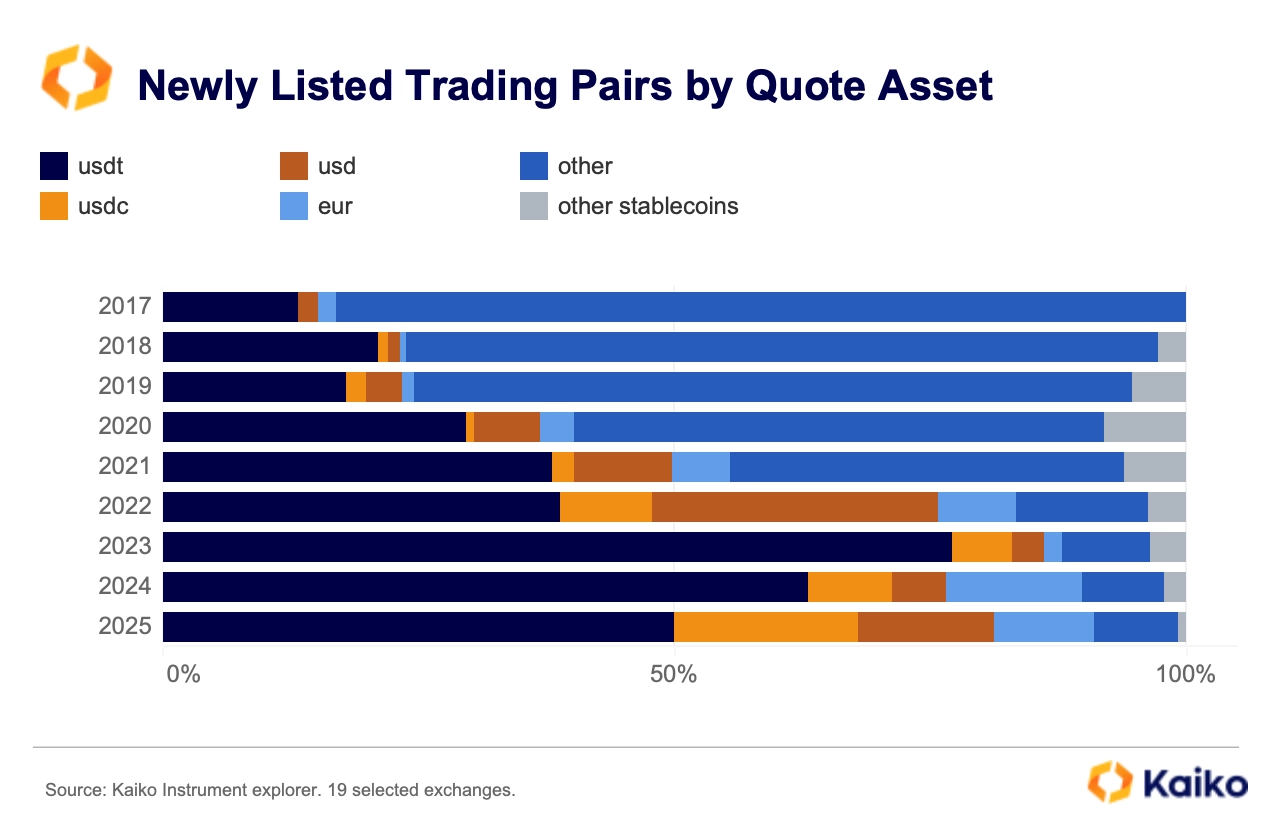
Notably, euro-supported trading pairs are gradually gaining market attention. This may indicate that the EU market is experiencing a revival with the implementation of the MiCA regulations in 2024. For a more detailed analysis of euro market trends, please refer to our latest research report.
Altcoin Liquidity: Centralization Trends and the Rise of Small Tokens
Since the U.S. elections, market sentiment and outlook for altcoins have significantly improved. This positive sentiment has driven a surge in new altcoin ETF applications and a spike in trading activity.
Data shows that daily liquidity indicators for altcoins (measured by the 1% market depth of the top 50 tokens) have nearly doubled since September 2023, reaching $960 million.
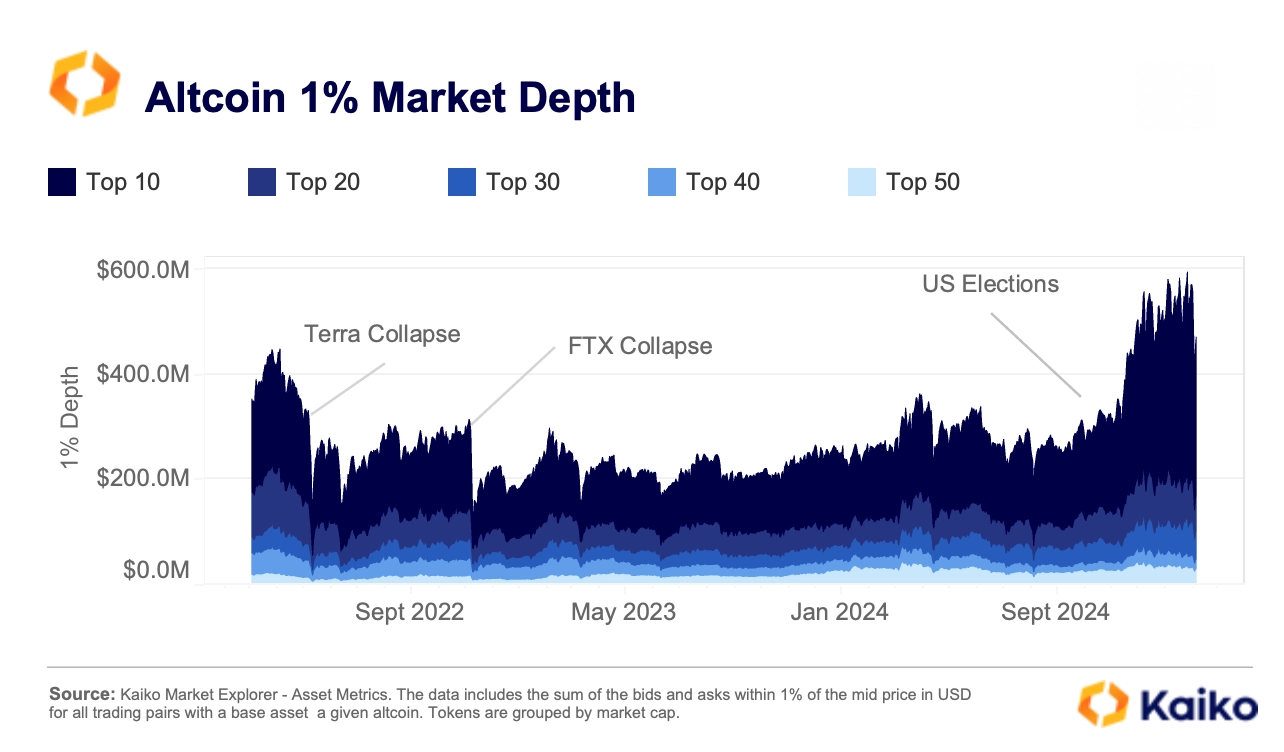
However, liquidity distribution remains uneven, still highly concentrated among the top 10 altcoins, which account for 64% of total market depth. In contrast, the liquidity share of mid-cap tokens (ranked 20–30) has decreased, while small-cap tokens (ranked 50) have shown unexpected growth, with their liquidity share even surpassing that of higher market cap groups (ranked 40).
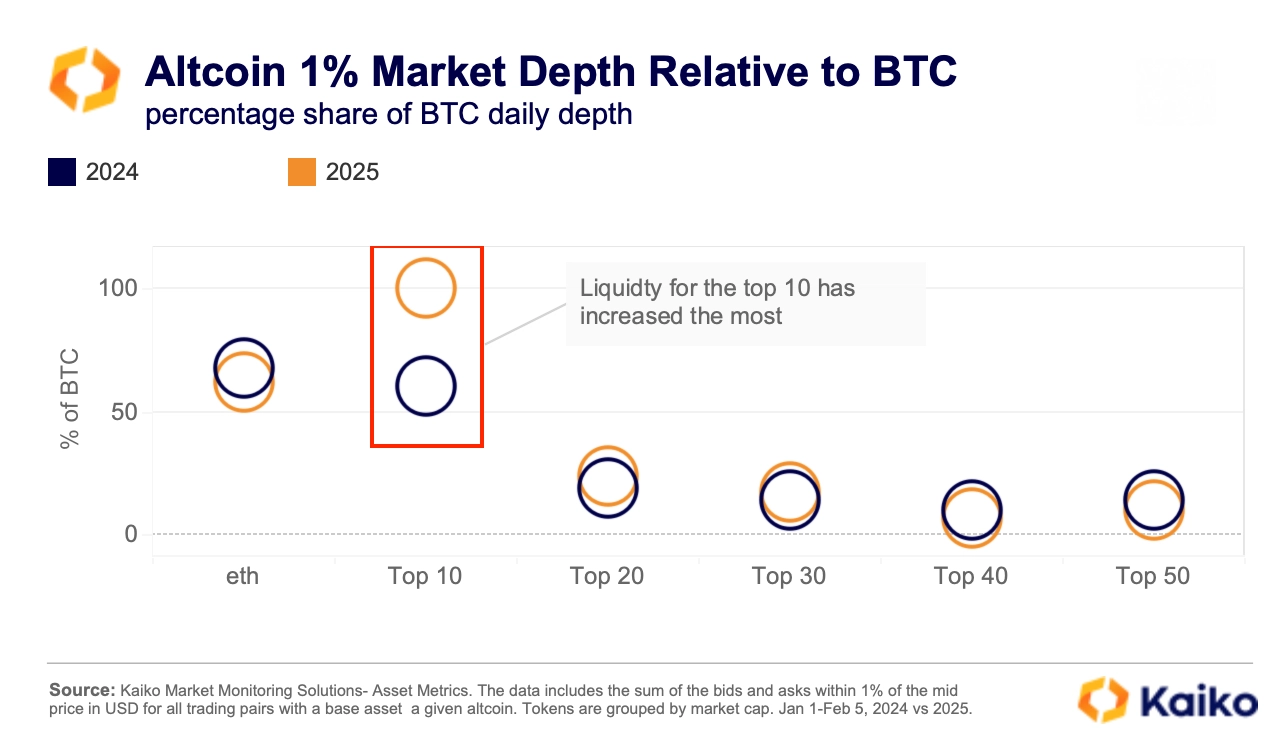
Nevertheless, market liquidity remains highly concentrated, with the top 10 altcoins accounting for 64% of total market depth. In contrast, the market share of mid-cap tokens (ranked 20–30) has decreased, while small-cap tokens (ranked 50) have unexpectedly grown, with their liquidity share even exceeding that of higher market cap tokens (ranked 40).
免责声明:本文章仅代表作者个人观点,不代表本平台的立场和观点。本文章仅供信息分享,不构成对任何人的任何投资建议。用户与作者之间的任何争议,与本平台无关。如网页中刊载的文章或图片涉及侵权,请提供相关的权利证明和身份证明发送邮件到support@aicoin.com,本平台相关工作人员将会进行核查。




